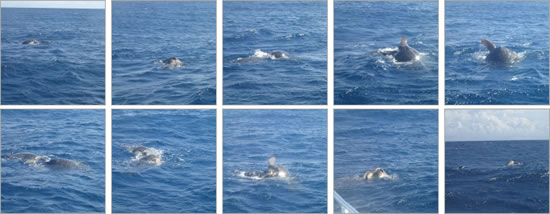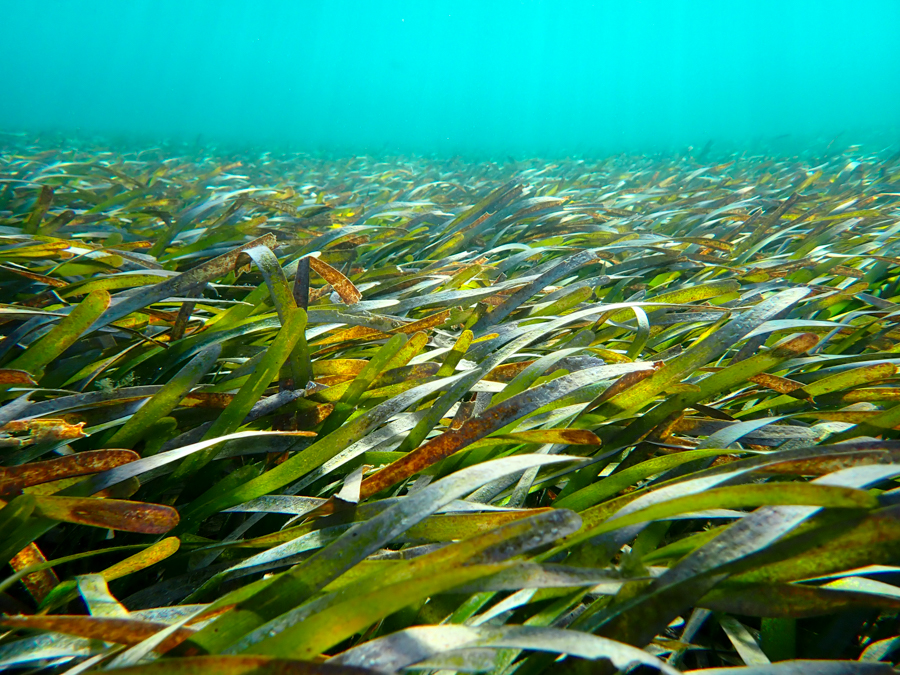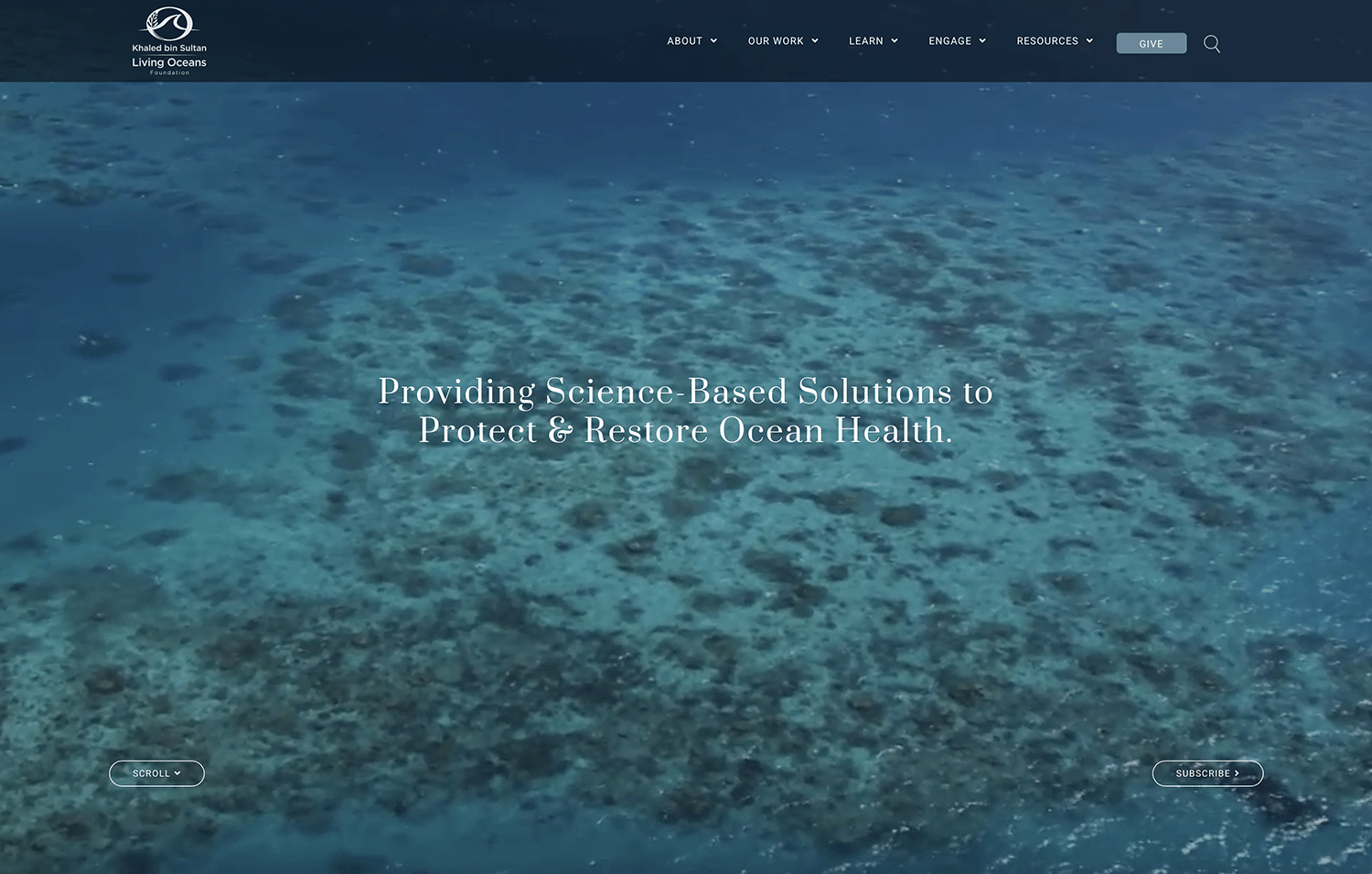Expedition Log: BIOT – Day 24
While traveling from one survey site to another, the ground-truthing team came across two sea turtles mating. They appeared to be green turtles (Chelonia mydas), currently most abundant of the sea turtle species. Green sea turtles occur in tropical and sub-tropical waters. As adults, these turtles are predominantly herbivorous and are commonly found in lagoonal habitats feeding on seagrasses. They undergo large migrations, up to 2,000 km between their feeding and breeding grounds. The females will nest on the same beach every year, laying 100 to 200 eggs at a time.
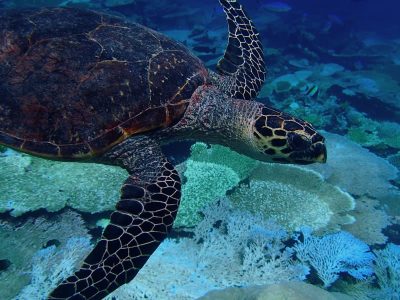
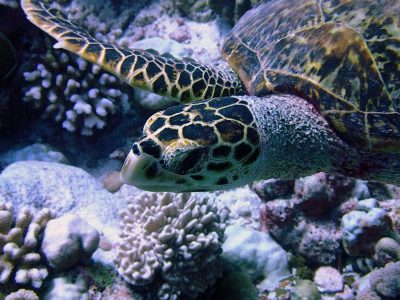
Green sea turtle (Chelonia mydas).
Sea turtle mating is an aquatic dance where males court a single female. The female will choose between two or more suitors, or if uninterested, will swim to the bottom and rest on the sea floor. Mating typically occurs in tropical or sub-tropical waters near to the sandy beach the female will use to lay her eggs several weeks after mating. This is typically done at night during high tide. The female will dig a hole, the size of which is determined by the length of her hind flipper, and will deposit the ping-pong-ball-shaped eggs. The nest is then covered to protect the eggs from predators, prevent the eggs from drying out, and help the eggs maintain the proper temperature. Although many eggs are laid, it is estimated that only one or two of these turtles will ultimately survive to adulthood.
The Aquatic Dance
The eggs of all turtle species, except the Kemp’s ridley, hatch at night. After 100 to 150 days, the turtles will dig their way out of the nest and use the light of the moon to guide them to the surf zone. Coastal development has made this process difficult, with nests being unintentionally disturbed or damaged by beachgoers and newborn hatchlings, confused by artificial lighting, crawling inland instead of towards the ocean. Many municipalities and countries have tried to remedy this by roping off turtle nests to prevent human disturbance and implementing lighting restrictions on buildings adjacent to coastal areas.
Fishing is another major threat to turtles. Turtle eggs and meat are commercially harvested and sold worldwide. In addition, turtles are commonly caught as bycatch by certain fishing methods, especially shrimp netting and long-lining. Longlines are usually set for many hours before they are retrieved. If a turtle becomes hooked on a longline it is likely to drown because it will be unable to reach the surface to breathe air. Shrimp nets and other net fisheries can entangle a turtle, causing injuries or drowning. Turtle exclusion devices are now required by law in some countries to allow turtles to escape safely if they become caught in the nets.
It has been difficult to assess the status of sea turtle populations. Most information comes from counting nests on beaches, however this statistic does not provide an accurate picture of the whole sea turtle population. Furthermore, accurate information on the fishing mortality that sea turtles face is difficult to attain, as many fishers are reluctant to report the amount of incidental sea turtles that were caught during fishing operations. Sea turtles take decades to reach sexual maturity, with only a few individuals from each reproductive event reaching adulthood. As a result, proper management of anthropogenic stressors, such as fishing and coastal development, is necessary to ensure sea turtle population sustainability.
Photos by Steve Saul.

